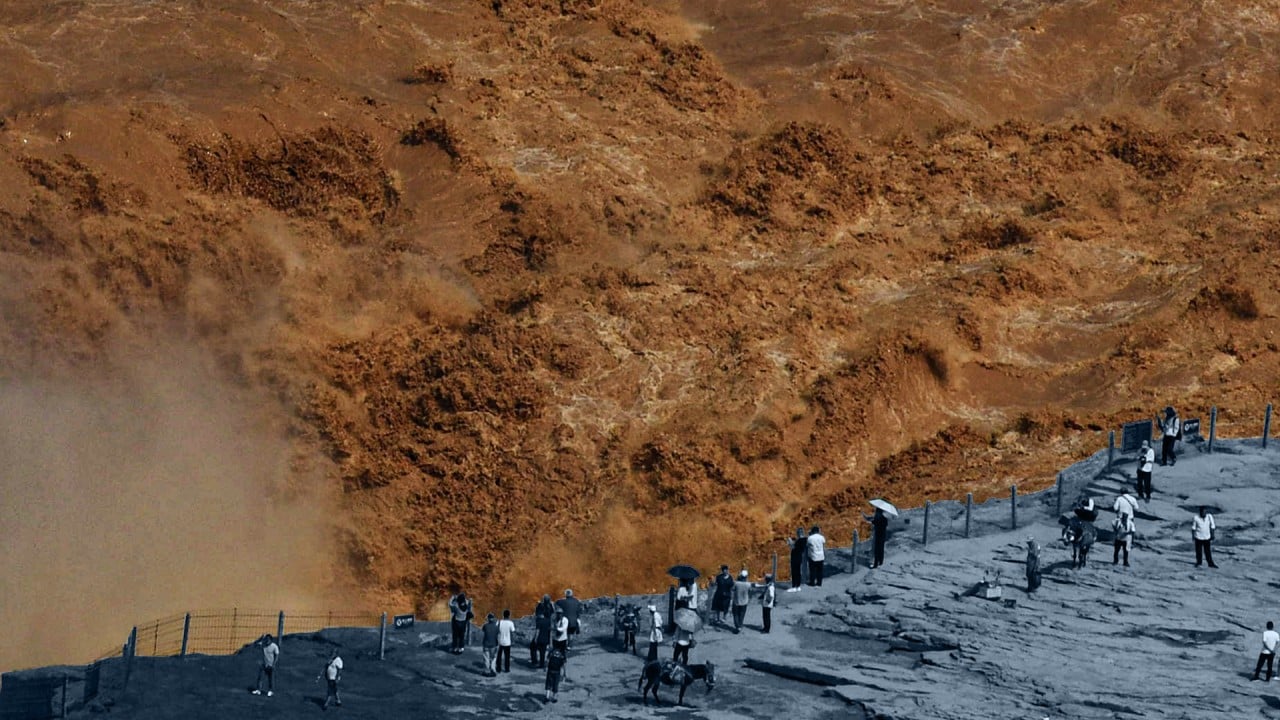The arid climate means the salts are not diluted by rain, so the soil gradually builds up a thick layer of salt.
Salt can’t halt China’s food security push as saline soils yield vast harvests
Salt can’t halt China’s food security push as saline soils yield vast harvests
Li, a researcher at the Chinese Academy of Agricultural Sciences, and his team have come up with an innovative solution to address the poor soil quality. They took crop stalks measuring about 5cm to 15cm (two to six inches) in length and laid them flat under the soil at a depth of 30cm to 40cm, which prevents the salt from rising to the surface. They also covered the ground with a layer to plastic to help retain soil moisture.
After this treatment, the salt content of the soil was reduced by 36 per cent on average and crop yields increased by 30.5 per cent, according to the official Science and Technology Daily on Friday.
According to the report, the team spent more than a decade researching the treatment of saline-alkaline soil in other parts of China, including Shandong and Heilongjiang provinces, and explored soil restoration methods tailored to local conditions.
China ranks third among countries in terms of the size of its saline-alkaline land, which covers an area of about 100 million hectares (247 million acres) about a third of which has potential for use with soil treatment or better farming practices.
Since the 1950s, China has embarked on large-scale national campaigns to manage saline and alkaline soil.
Chinese President Xi Jinping addressed the problem in a speech last July: “Given that China has a lot of saline lands and the trend of salinisation of farmland is worsening in some areas, it is of great significance to carry out comprehensive improvement and utilisation.”
In an interview with state-run China News Service this month, Ma Wei, a scientist at the Jilin Provincial Academy of Agricultural Sciences, noted that China now has more than 40 methods or technologies for treating saline soil.
“Many countries are taking action and pioneering many practices and measures to develop and manage affected soils,” Ma said.
He added that China has provided Belt and Road Initiative countries and developing countries advanced technology and experience to address the problem, but the country was also learning from others and has introduced rice seeds with salt-tolerant genes from Italy, Japan, South Korea, the United States and other countries.
China’s advanced rice squares off against the salt deserts of Xinjiang
China’s advanced rice squares off against the salt deserts of Xinjiang
Officials pledged to keep total grain output above 650 million tonnes (717 tons), a level China has achieved since 2015, as Beijing prioritises self-sufficiency in the face of rising climate shocks and an uncertain global food market.
In a note to the rural work meeting, Xi described farmland as China’s “lifeblood” and urged increased investment in “high-quality” farmland.
According to the Food and Agriculture Organization of the United Nations (FAO), more than 833 million hectares of land around the world were salinised – an area around four times the size of India that represents about 9 per cent of the Earth’s land surface.
According to the FAO, unsustainable agricultural practices and overexploitation of natural resources, as well as a growing global population, have put growing pressure on soil, causing alarming rates of soil degradation worldwide.



